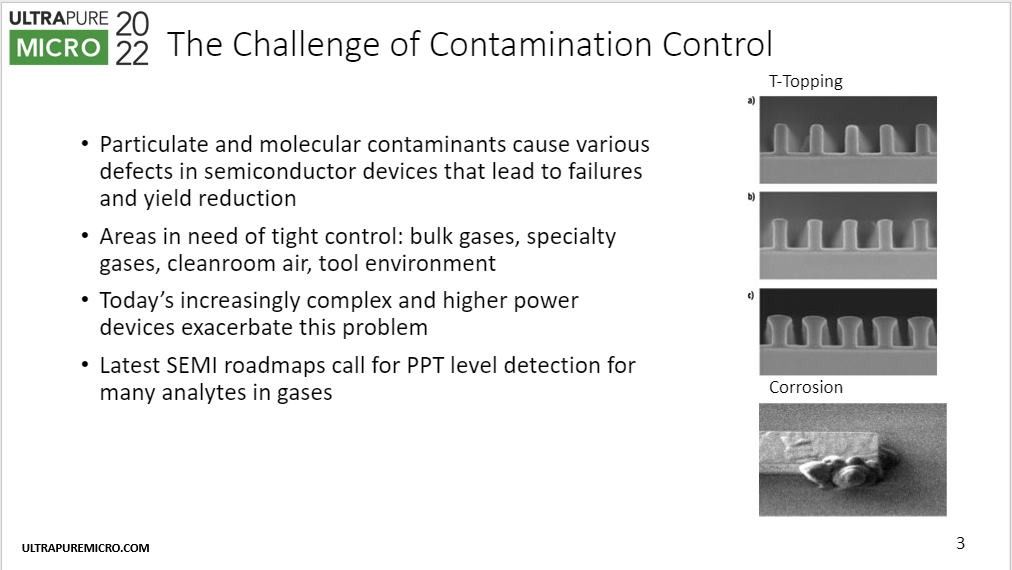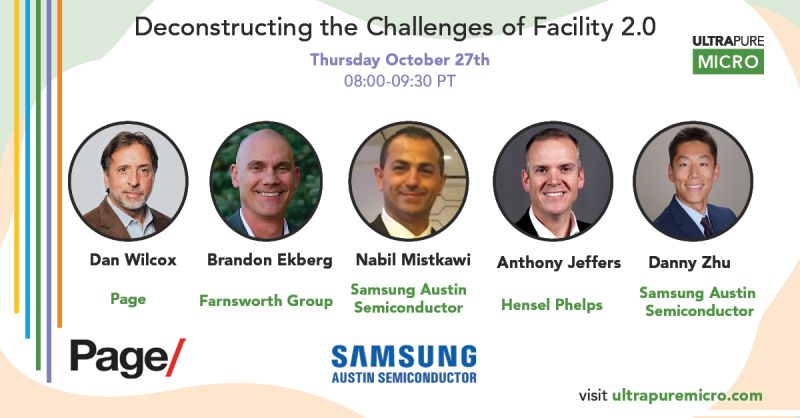Contamination Control in Liquid Chemicals - Q&A
Date Published 2020 | Conference materials
Log in or Join UltraFacility to access this content
To access our resources you will need to be a member of UltraFacility, log in to your account or purchase a membership to view this content.
Already have an account? Log in
This Q&A session took place at the 2020 Ultrapure Micro annual conference. It was a part of the AMC, Liquid Chemicals & Gases Control track, and included speakers from the Contamination Control in Liquid Chemicals session.
Authors: Suhas Ketkar,
Tags: Metrology and Analytical TechnologyDistribution SystemsHigh Purity ChemicalsMetal Contamination
Related content
Conference material | 2018
Development of an Online Urea Monitor for Ultrapure Water Production in Semiconductor Fabrication Plants

Conference material | 2022
Multi-Species PPT-Level Impurity Detection in Electronic Bulk Gases Using Atmospheric Pressure Ionization Mass Spectrometry

Seminars | 2022
Deconstructing the Challenges of Facility 2.0: Device Complexity Drives Facility Complexity
Conference material | 2015
THM – A Novel Sustainable Approach as a Global Solution for UPW Applications
Back to results